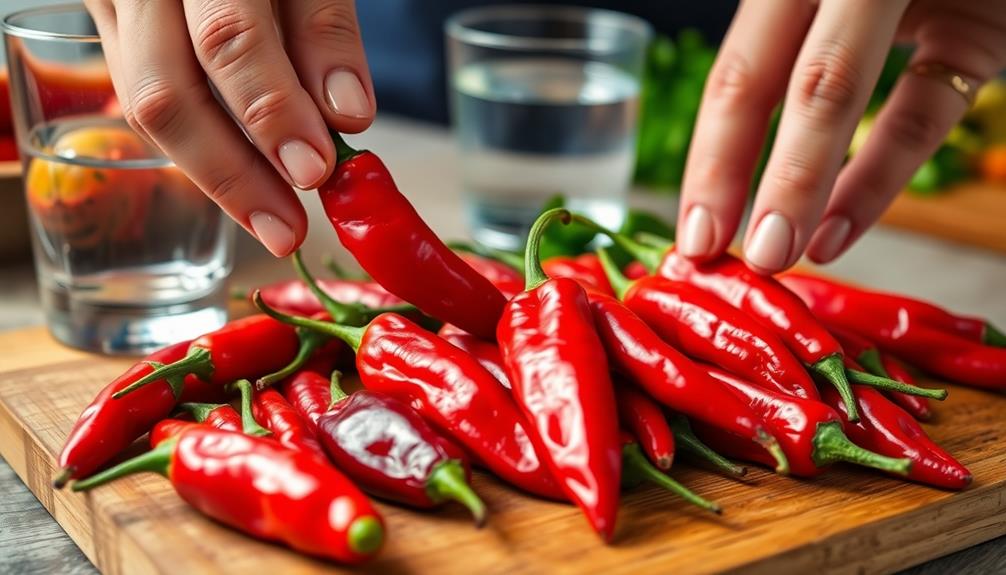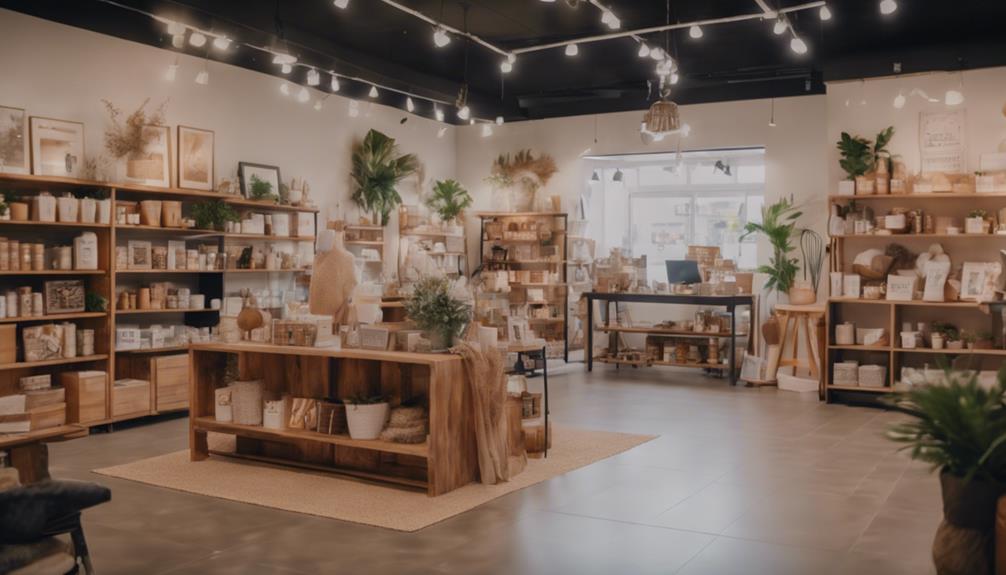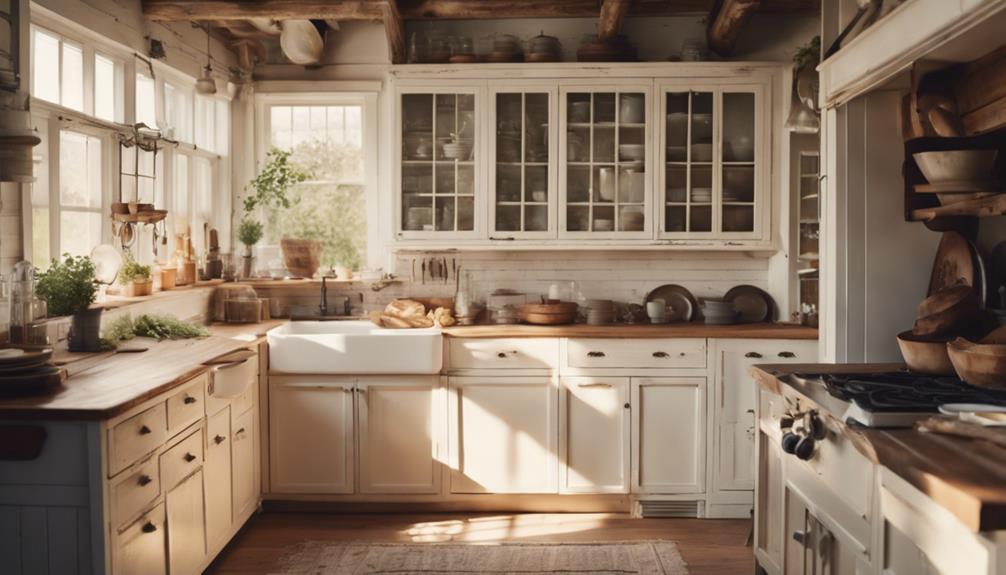Some individuals possess a greater tolerance for capsaicin as a result of a combination of genetics, regular consumption of spicy foods, and cultural upbringing. Your genetic composition can influence the sensitivity of your TRPV1 receptors, which plays a significant role in determining your tolerance for spiciness. Habitual consumption of spicy dishes can lead to a desensitization over time, decreasing the intensity of the heat. Additionally, positive experiences with spicy foods can enhance your enjoyment and willingness to consume them. Interested in exploring how these factors work together to shape your spice preferences? There is more to discover about this fiery topic.
Key Takeaways
- Genetic factors account for 18-58% of spice tolerance, with variations in TRPV1 receptor sensitivity influencing individual experiences.
- Regular consumption of spicy foods leads to desensitization of TRPV1 receptors, enhancing tolerance over time.
- Cultural exposure to spicy cuisines from an early age fosters higher tolerance and appreciation for heat.
- Positive psychological associations with spicy foods can increase enjoyment and tolerance levels.
- Gradual exposure to spicier dishes helps the body adapt, allowing individuals to build tolerance effectively.
Understanding Capsaicin and Spiciness
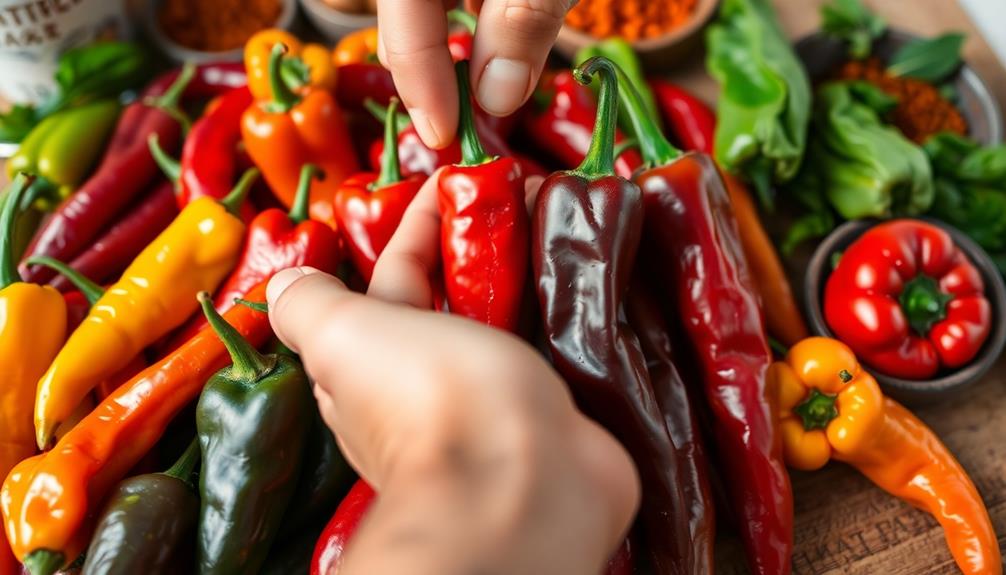
Capsaicin is the compound that gives spicy foods their heat, and it works by binding to TRPV1 receptors in your mouth, which are designed to detect heat and pain. When you eat spicy foods, capsaicin activates these receptors, tricking your brain into perceiving a burning sensation. This is why you might feel a rush of heat when biting into a chili pepper.
Many people enjoy dishes like Mushroom Masala that utilize spices to enhance flavors without overwhelming heat.
Your tolerance for spiciness can vary widely, influenced by several factors. Regular consumption of spicy foods can lead to desensitization of your TRPV1 receptors, allowing you to handle hotter peppers over time. As your receptors become less sensitive, you find yourself enjoying spicier dishes without the overwhelming discomfort you might've experienced initially.
It's worth noting that everyone's tolerance is unique. Some people have a higher number of TRPV1 receptors or more sensitive ones, which can make spicy foods feel much hotter to them.
Additionally, psychological and cultural influences shape your experiences with spice, impacting how you perceive and enjoy different levels of heat. Understanding capsaicin and its effects on your receptors can help you appreciate the complex world of spicy foods.
Genetic Influences on Tolerance

Understanding how genetics shapes your tolerance for spice reveals fascinating insights into your culinary experiences. Research shows that between 18-58% of your spice tolerance is hereditary, meaning your genetic makeup plays a significant role in how you experience capsaicin.
For example, those with a higher tolerance might enjoy dishes like Cumin Lamb more than others, as the bold flavors can be less overwhelming. If you have fewer capsaicin receptors, you'll likely find spicy foods less intense, leading to a higher natural tolerance.
Identical twins often share similar spice preferences more than fraternal twins, further emphasizing genetics' influence on spice tolerance. Variations in your genetic makeup can affect the sensitivity of TRPV1 receptors, which are essential for detecting capsaicin and determining your overall tolerance.
To enhance your understanding of spice tolerance, consider these points:
- Your genetic background can dictate how spicy you enjoy your food.
- Early exposure to spicy dishes can lead to desensitization, increasing your tolerance over time.
- Recognizing your unique genetic influences can help you navigate spicy cuisine more confidently.
Embracing these genetic factors can deepen your appreciation for spicy foods, making your culinary adventures even more enjoyable!
Frequency of Spicy Food Consumption

Your dining habits play an essential role in determining how much you can handle spicy foods. The frequency of spicy food consumption directly influences your tolerance levels. When you regularly eat spicy foods, your mouth's receptors gradually become desensitized to capsaicin. This means that what once felt overwhelmingly spicy might become enjoyable over time.
Here's a quick look at how your eating patterns can shape your spice tolerance:
| Frequency of Consumption | Tolerance Level |
|---|---|
| Rarely | Low tolerance |
| Occasionally | Moderate tolerance |
| Regularly | Higher tolerance |
| Daily | Very high tolerance |
Studies reveal that people who frequently indulge in spicy dishes often associate the burning sensation with positive experiences. In regions like Mexico and India, where spicy cuisine is a norm, children naturally develop a higher tolerance from a young age. If you want to boost your spice tolerance, consider gradually introducing spicier foods into your meals. This repeated exposure to capsaicin can help you enjoy higher spice levels without discomfort, ultimately making eating spicy foods a more pleasurable experience.
Psychological Factors in Spice Perception

The way you perceive spice can be heavily influenced by psychological factors. Your brain interprets the effects of capsaicin, which can turn what some feel as pain into an enjoyable experience. This "pain pleasure paradox" means that the discomfort from spicy foods often leads to greater enjoyment and a desire for more.
For those who enjoy cooking, this appreciation for spice can elevate dishes like a Grilled Peach and Burrata Salad when paired with a hint of heat, creating a delightful contrast of flavors.
Consider these points to enhance your spice experience:
- Mental Associations: Positive past experiences with spicy foods can greatly boost your tolerance, making you more inclined to seek out those flavors.
- Context Matters: Enjoying spicy dishes in social settings can create positive memories, further increasing your appreciation for spice.
- Personality Traits: If you're a sensation-seeker, you might find that thrill in the burning sensation, enhancing your enjoyment rather than viewing it as unpleasant.
Recognizing these psychological factors can help you understand your spice tolerance better. As you embrace the heat, you might discover that your pain receptors are less of a barrier and more of an invitation to explore the exciting world of spicy flavors!
Cultural Impact on Spice Tolerance
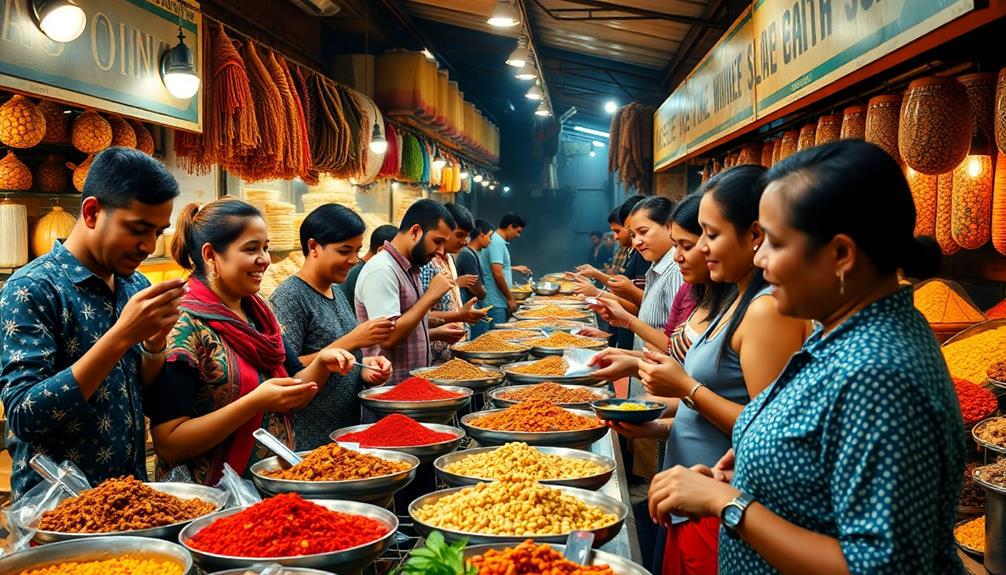
Culturally, regions that frequently embrace spicy foods tend to develop a higher tolerance for capsaicin among their populations. For example, traditional dishes like chilaquiles often feature bold salsas that introduce heat early on.
If you hail from a cultural background that includes capsaicin-rich cuisines, you're likely to have experienced early exposure to spicy dishes. This early introduction helps desensitize your taste buds, allowing you to appreciate and enjoy the heat more as you grow.
Communal dining experiences play an essential role in shaping your spice preferences, too. Sharing meals that feature bold flavors strengthens your connection to these foods, making them a cherished part of your culture.
If you grew up in a family that regularly enjoyed spicy meals, chances are you've developed a higher spice tolerance compared to those from less spice-centric backgrounds.
These long-term adaptations in taste preferences are a reflection of how cultural cuisines influence your relationship with spice. As you embrace the flavors of your heritage, you not only enhance your culinary experiences but also build a stronger appreciation for the warmth that capsaicin brings to your meals.
Health Benefits of Spicy Foods
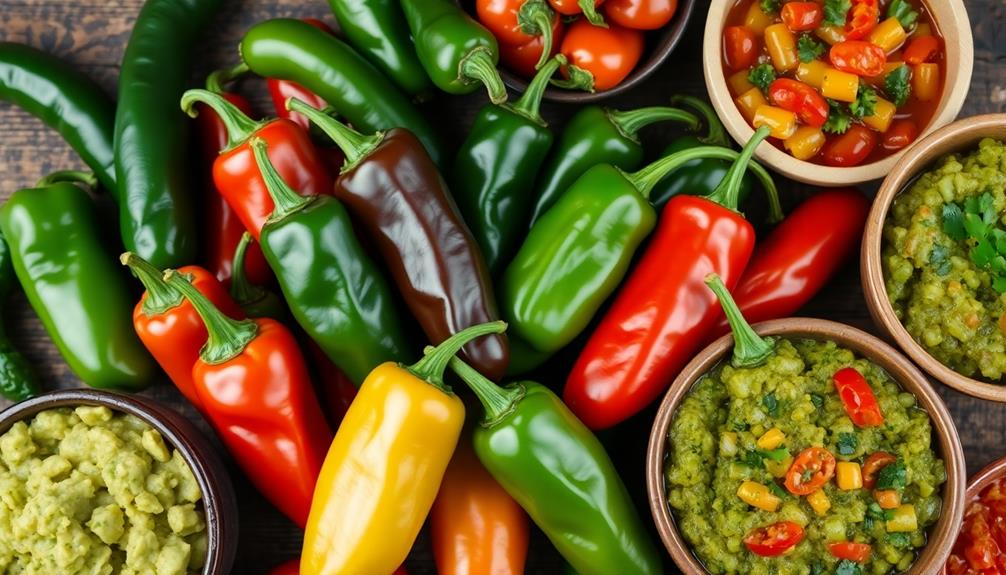
Embracing spicy foods not only enriches your culinary experiences but also brings a range of health benefits that can positively impact your well-being. Incorporating capsaicin-rich foods into your diet can help you manage your weight by boosting metabolism and promoting fat burning.
Additionally, the vibrant flavors found in Brazilian cuisine often feature spicy ingredients that enhance both taste and health. Plus, regular consumption of spicy foods has been linked to improved heart health, as capsaicin may lower cholesterol levels and reduce blood pressure.
Here are some key health benefits of spicy foods:
- Anti-inflammatory effects: Capsaicin may help alleviate pain and inflammation, making it beneficial for conditions like arthritis.
- Cancer risk reduction: Research suggests that capsaicin could inhibit cancer cell growth, potentially lowering the risk of certain cancers.
- Enhanced digestive health: Spicy foods can boost the production of digestive enzymes and improve gut microbiota diversity.
Training Your Spice Tolerance

If you want to boost your spice tolerance, start by gradually incorporating spicier foods into your meals.
This consistent exposure helps your pain receptors adapt, making the heat feel less intense over time. For instance, you might try dishes like Laksa (Spicy Noodle Soup) to introduce a flavorful kick.
Plus, embracing a positive mindset can make the experience more enjoyable and encourage you to keep pushing your limits.
Gradual Exposure Benefits
Gradually increasing your exposure to spicy foods can greatly enhance your tolerance for capsaicin over time. By incorporating spicy foods into your diet little by little, you allow your body to adjust without overwhelming your senses.
For instance, exploring dishes like Muamba De Galinha can introduce you to rich flavors while gradually increasing your spice tolerance. Studies indicate that regular consumption of capsaicin can desensitize your TRPV1 receptors, which means you won't feel that intense burning sensation as much as you used to.
As you build your tolerance, you might even find that you enjoy the flavors of spicy foods more rather than just focusing on the heat.
Here are a few tips to help you on your journey:
- Start Small: Choose milder peppers or sauces and gradually work your way up.
- Mix It Up: Combine spicy ingredients with other foods to balance the flavors and ease into the heat.
- Stay Positive: Remind yourself of the enjoyable aspects of spicy foods, reinforcing your experience with a "fake it till you make it" mindset.
With patience and gradual exposure, you'll find that you can handle more heat without discomfort, enhancing both your culinary adventures and your spice tolerance!
Psychological Factors at Play
Building on the journey of increasing your spice tolerance, psychological factors play a significant role in how you perceive and enjoy spicy foods. For instance, just like how people enjoy festive treats like Graveyard Taco Dip, experiencing the burning sensation from capsaicin can initially feel uncomfortable, but the "pain pleasure paradox" suggests that many people find pleasure in that very discomfort. This paradox is often tied to a release of endorphins, the body’s natural “feel-good” chemicals, which can create a rewarding experience despite the initial discomfort. Similarly, the effects of detox diets on mental health have been subjects of interest, as restrictive diets may promise a sense of control and well-being, but can sometimes lead to increased anxiety or stress. Just as with spicy foods, the balance between pleasure and discomfort often plays a key role in shaping our relationship with what we consume.
This thrill can motivate you to seek out spicier options, reinforcing your tolerance over time.
Gradual exposure is key. As you consistently consume spicy foods, your brain learns to associate the initial discomfort with enjoyment, transforming your experience. Over time, this process can alter your perception of spiciness, making it less intimidating and more enjoyable.
Personality traits also come into play; if you're a sensation-seeker, you might relish the intense sensations that spice brings, viewing them as exciting rather than painful.
Ultimately, by embracing the psychological factors at play, you can train your taste buds and brain to appreciate the rich flavors of spicy cuisine. The more you explore these flavors, the more your tolerance grows, allowing you to enjoy an even wider array of culinary delights.
Personal Experiences and Preferences

Many people's journeys with spicy foods are shaped by their unique experiences and preferences. Your tolerance for capsaicin often develops through consistent exposure, leading to desensitization of your pain receptors over time.
If you grew up in a culture rich in spices, you might find that your tolerance is naturally higher due to early and frequent encounters with spicy food. For instance, enjoying dishes like Hiyashi Chuka during summer can introduce you to a variety of flavors, including tangy sauces that may incorporate spicy elements.
Psychological factors also play a role—positive associations and the thrill of eating spicy dishes can enhance your enjoyment, making you more likely to seek out these flavors. When you share meals centered around spicy cuisine, those personal experiences reinforce your preferences and build lasting memories.
To enhance your journey with spicy foods, consider these tips:
- Start with milder spices and gradually increase the heat.
- Experiment with various cuisines to find what excites your palate.
- Share your spicy food experiences with friends and family for added enjoyment.
Frequently Asked Questions
Why Are Some People More Sensitive to Capsaicin?
Some people are more sensitive to capsaicin due to genetic differences. If you have more TRPV1 receptors, you'll likely experience a stronger burning sensation. Early exposure to spicy foods can also influence sensitivity levels.
Why Do Some People Have a High Tolerance for Spicy Food?
You might think spice tolerance's purely about preference, but it's a blend of genetics, regular exposure, and cultural influences. By gradually introducing heat, you can enhance your enjoyment and tolerance of spicy foods.
Is Capsaicin Tolerance Genetic?
Yes, capsaicin tolerance is often genetic. You might inherit more or fewer capsaicin receptors, which affects how spicy foods feel to you. Your background and experiences with spicy foods also play an essential role.
Do You Build Tolerance to Capsaicin?
Yes, you can build tolerance to capsaicin. By gradually increasing your intake of spicy foods, your mouth's pain receptors become desensitized, allowing you to enjoy hotter dishes without overwhelming discomfort over time.
Conclusion
In the end, your tolerance for capsaicin isn't just about genetics; it's a spicy mix of culture, habits, and your own unique taste buds. Just like a knight in shining armor, you can train yourself to handle more heat over time. Embracing the fiery flavors can lead to health perks, too. So, whether you're a casual taster or a heat warrior, explore the world of spice and discover what ignites your palate!
